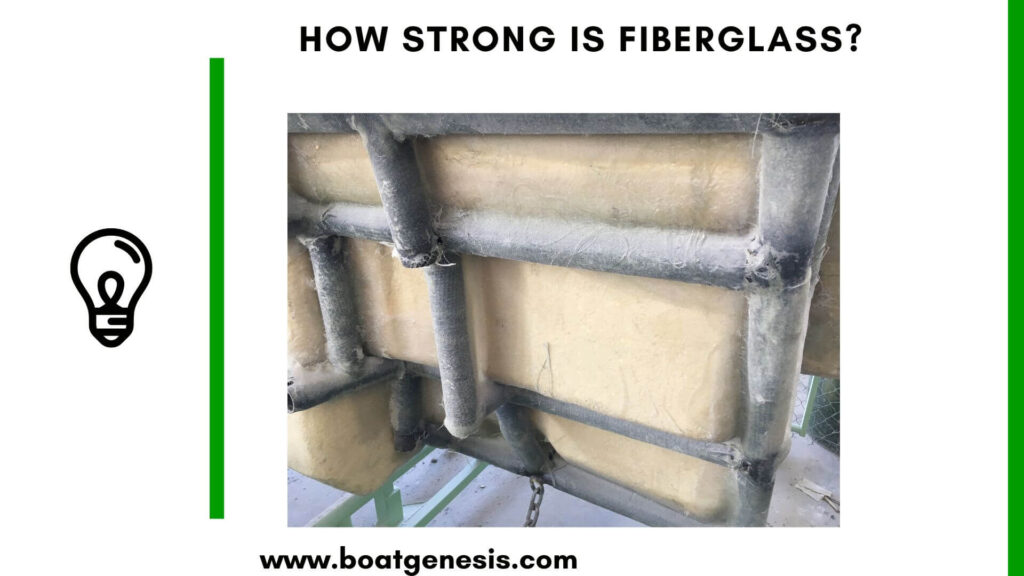Fiberglass is incredibly strong, often stronger than steel or aluminum on a pound-for-pound basis. This lightweight, versatile material has revolutionized countless industries with its impressive strength-to-weight ratio and durability.
Let’s dive into what makes fiberglass so strong and explore its unique properties and applications.
The Science Behind Fiberglass Strength
Fiberglass gets its strength from the combination of glass fibers and resin. The glass fibers themselves have high tensile strength, meaning they can withstand significant pulling forces without breaking.
They also have a high elastic modulus, allowing them to resist stretching and maintain their shape under stress.
When these strong glass fibers are combined with a sturdy resin matrix, the result is a composite material with superior mechanical strength. The resin binds the fibers together and distributes the load evenly, creating a material that is stronger than the sum of its parts.
Types of Fiberglass and Their Strength
Not all fiberglass is created equal. Different types of glass fibers and resins can be used to create fiberglass with specific properties tailored to various applications. Some common types include:
- E-glass: The most widely used type, known for its excellent electrical insulation properties and good strength.
- S-glass: Offers higher tensile strength and modulus than E-glass, making it ideal for advanced aerospace and military applications.
- C-glass: Provides enhanced chemical resistance, making it suitable for corrosive environments.
Each type of fiberglass has its own unique strength profile, allowing engineers and designers to choose the best option for their specific needs.
==>> Also read: How is Fiberglass made?
Fiberglass vs. Traditional Materials
So, just how strong is fiberglass compared to other materials? Let’s take a look:
- Steel: While steel is known for its strength, fiberglass can be up to 5 times stronger than steel on a pound-for-pound basis.
- Aluminum: Fiberglass also outperforms aluminum in terms of specific strength, offering superior performance at a lower weight.
- Wood: Fiberglass is far stronger and more durable than wood, resisting rot, warping, and splitting over time.
- Concrete: While concrete is strong in compression, fiberglass excels in tensile strength, making it an excellent reinforcement material for concrete structures.
Real-World Applications of Fiberglass Strength
The strength of fiberglass has made it an essential material across numerous industries. Some notable applications include:
- Aerospace: Fiberglass composites are used in aircraft components, satellites, and spacecraft due to their high strength-to-weight ratio.
- Automotive: Fiberglass is used in car bodies, bumpers, and other components to reduce weight and improve fuel efficiency without sacrificing strength.
- Construction: Fiberglass reinforced plastics (FRP) are used in structural elements, roofing, and bridge decks for their durability and corrosion resistance.
- Sports equipment: From fishing rods to hockey sticks, fiberglass provides the strength and flexibility needed for high-performance gear.
==>>Also Read: What is Fiberglass used for?
The Future of Fiberglass Strength
As technology advances, researchers continue to develop new ways to enhance the strength of fiberglass. Innovations in fiber materials, resin formulations, and manufacturing processes promise to push the boundaries of what’s possible with this remarkable material.
So, the next time someone asks, “How strong is fiberglass?” you can confidently answer: stronger than you might think! With its impressive strength-to-weight ratio, durability, and versatility, fiberglass is set to remain a go-to material for engineers and designers across industries for years to come.

Founder of BoatGenesis, Warren has hands-on experience in fiberglass boat repairs, marine equipment testing, and powerboat building. Learn more about Warren.




